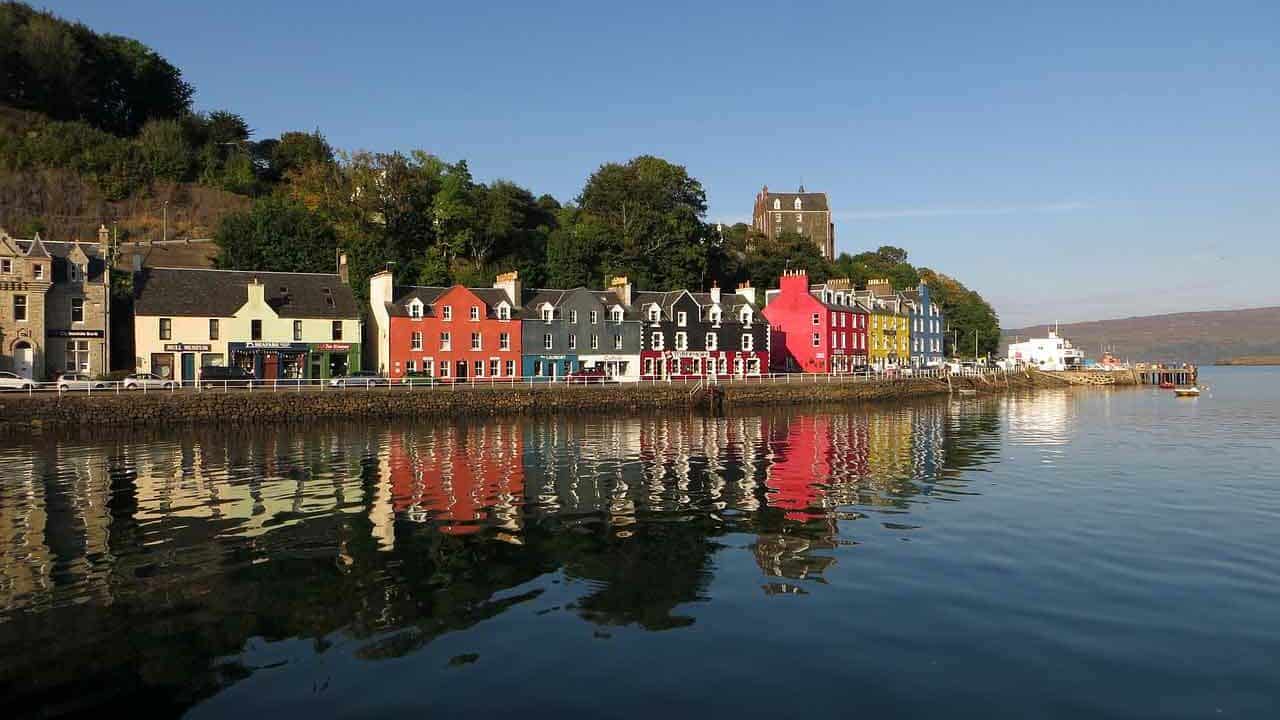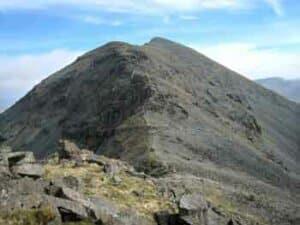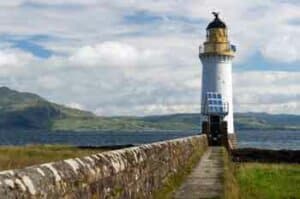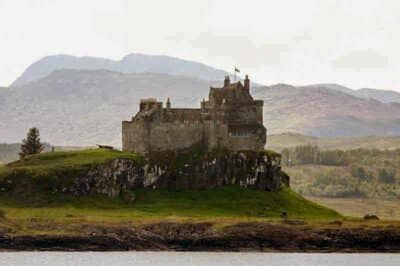
The Inner Hebridean Isle of Mull lies five miles from the Scottish mainland.
Asked about their first impression of Mull, part of a group of islands that include: Iona, Tiree, Coll and the little island of Staffa, a visitor might readily talk, in artistic terms, about colour or style.
As evidence, they might point to the rather quaint houses that line the seafront of Tobermory Bay proudly displaying their orange, blue, red and pink facades, a pleasing contrast with the ubiquitous green of the nearby trees.
Isle of Mull: Iron Age crannogs
However there is much more to Mull than its obvious beauty. Lift the cover just a little, peer inside and a fascinating, sometimes chaotic history is revealed.
Looming castles from the Middle Ages, Bronze Age standing stones and burial cairns and Iron Age crannogs and brochs are compelling evidence of the rudimentary communities that once called the island home.

For those interested in the earliest residents, it’s worth dwelling for a moment on the continuing work at Baliscate, a small community, which lies around half a mile south west of the island’s main town of Tobermory and boasts an unrivalled view across the Sound of Mull to the remote Ardnamurchan peninsula.
A discovery, by two eagle-eyed locals, of what appeared to be a simple earth mound turned out to be much more exciting.
An investigation by archaeologists revealed a small chapel and burial ground, part of a larger monastic complex, now dated to a period between the 7th and 8th centuries. It was an exceptional example of early Christian archaeology.
St Columba
Two finds, in particular, were important: fragments of skull bones, found close to the original position of the altar, were radiocarbon dated to between 610 and 690.
These dates are only one or two generations removed from St Columba, who from the nearby Island of Iona spread Christianity throughout parts of Scotland.
The other was part of a Celtic cross, which once stood outside the chapel entrance, similar in design to those discovered on Iona and at Celtic Christian sites in Ireland. In addition, other evidence suggested the site was re-occupied, probably between the 12th and 15th centuries.
Also within sight of Ardnamurchan, overlooked by the lonely lighthouse of Rubha nan Gall, is Bloody Bay, site of what historian Domhall Villeam Stiubhart of Edinburgh University described as one of the, “Greatest sea battles that Scotland has ever seen, perhaps one of the greatest sea battles of its time in the whole of Western Europe.”
While it’s difficult to be precise about dates most agree it was between 1480 and 1484.
Tobermory is the island’s main population centre, a product of town planning by the 5th Duke of Argyle and the British Fisheries Society in 1788 only a decade before the establishment of the island’s distillery which now produces the wonderful Tobermory ten year old single malt whisky.
James Boswell on his tour to the Hebrides with Samuel Johnson proclaimed, “Tobermorie is an excellent harbour. An island lies before it and is surrounded by a hilly theatre…”

That theatrical analogy might still be appropriate today when the story of the Spanish Armada galleon, thought to have sunk after an explosion in the bay in 1588, with a cargo of ‘treasure’, is considered.
For many years the site has seen a number of expeditions determined to recover whatever lay in the galleon’s hold.
It’s a compelling story, as all treasure-hunting stories are, but to date despite a number of attempts to locate the vessel no substantial trace has been found.
Isle of Mull: Duart Castle
Almost certainly the most prominent man-made feature on Mull is the formidable Duart Castle; Its cannon still guard the sea routes into Loch Linnhe, Loch Etive, the Firth of Lorne and the Sound of Mull.
This symbol of the island’s turbulent history is one of a chain of castles: Dunstaffnage, Dunoille, Aros and Ardtornish that stretch, in military precision, along the Firth of Lorne.
Although the Clan MacLean, its founder the fearsome 13th century Gillean of the Battleaxe, had long been established on the Scottish mainland, surviving records show the first association with the castle as 1367 (this date is a matter of debate).
In a Papal dispensation, permission was given for clan chief Lachlan Lubanach MacLean to wed Mary MacDonald the daughter of the Lord of the Isles. As part of the dowry, Lachlan MacLean received large parcels of land that included Duart.

The origins of Duart Castle are difficult to date, Royal Commission on the Ancient and Historical Monuments of Scotland (RCAHMS) say, “The structure appears to belong to a class of stronghold well represented on the western seaboard and attributable to the 13th century.”
William of Orange
Following the invasion of England by William of Orange in 1688 and the subsequent, MacLean support for the Jacobite uprising in Scotland control of Duart Castle passed to the Duke of Argyll, Chief of Clan Campbell in 1691.
Although the condition of the castle was allowed to deteriorate, it remained home to government soldiers until 1751 when it was abandoned.
The castle lay unused and unloved until purchased by Sir Fitzroy MacLean, the 26th clan chief, in 1910. In many ways, Fitzroy MacLean was a remarkable man, a proud soldier who took part in the Charge of the Light Brigade during the Crimean War. With determination, he set about the task of restoring Duart.
Today Duart Castle is open to the public and visitors are invited to explore and appreciate the special place that the castle occupies in the island’s long but sometimes less than glorious history.
Mull visitor information
- For further information and help planning your visit, go to the Visit Scotland website.